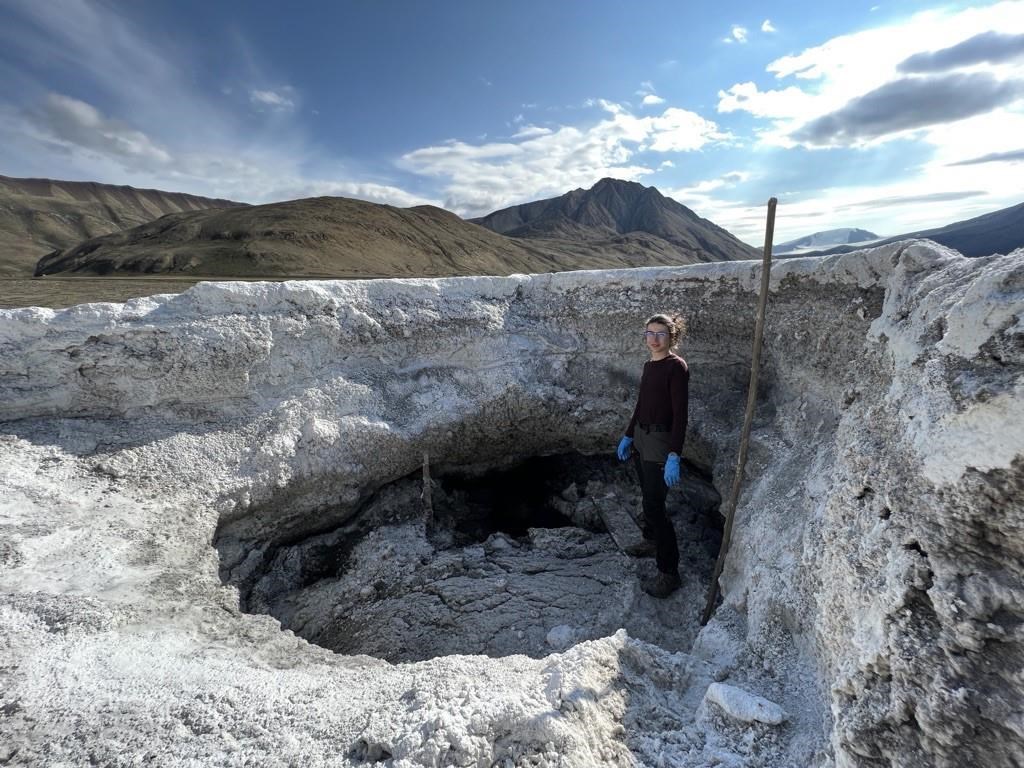AXEL HEIBERG ISLAND, NUNAVUT – A team of researchers has traveled to a remote island in the Arctic in hopes of better understanding the possibility of life on Mars.
Astrobiologist Haley Sabers, assistant professor at York University’s Lasund School of Engineering, leads the team at the McGill Arctic Research Station on Axel Heiberg Island. The uninhabited island is located in the Qikiqtaaluk region of Nunavut and has conditions similar to those on the Red Planet.
Under the 24-hour midnight sun, they plan to study the cold, brackish springs that release methane gas on Gypsum Hill, about a 45-minute walk from the research station. They also plan to take measurements of atmospheric methane and run simulations of the Mars Rover mission.
“Methane is a very important gas in the atmosphere here on Earth because it contributes so much to global warming,” said Ms. Sabers, a visiting researcher at Caltech. It’s also an interesting gas on Mars…and we don’t understand exactly where it comes from or where it disappears.
According to Sapers, most of the methane on Earth is biogenic, meaning that it is produced by living organisms. Gas can also be produced through geological processes.
Its presence on Mars could be evidence of past or present life, or indicate areas of the planet that may be inhabited in the future.
Scientists first detected traces of methane in the Martian atmosphere in 2003 and have continued to baffle.
Ms Sabers said one of the tools on the Curiosity rover was to sample the Martian atmosphere over several hours to enrich the methane so it could be analyzed. She said there aren’t many measurements of methane on Mars.
“We need a new type of instrument that is not resource intensive and can make very fast and sensitive measurements of methane,” she said.
On Axel Heiberg’s island, the research team plans to test a new tool developed with ABB Inc. , a Quebec-based technology and engineering company, that aims to do exactly that.
Ms Sabers said she also plans to conduct a detailed sampling of microorganisms that McGill University scientists have already discovered in the island’s brine cold spring deposits. She said team members want to determine whether these microorganisms oxidize methane, like those she studied in deep-ocean methane seeps.
“A better understanding of these microorganisms in the Arctic can help us understand the potential of microorganisms to prevent the release of large amounts of methane into the Arctic subsoil,” she said. That would be really important, especially in the context of climate change and global warming.”
The polar desert island is the perfect place to do this research, said Ms Sabers, because it is the only place on Earth where cold, ultra-saline springs seep methane into the permafrost – similar to conditions underground on Mars.
She said the planet and the island also have cool, dry conditions and polygonal terrain — a type of patterned soil that forms in permafrost regions on Earth through freezing and thawing.
“It’s great to be here,” she said. It’s a very exciting place to do research.”

“Hardcore beer fanatic. Falls down a lot. Professional coffee fan. Music ninja.”







More Stories
Martin Freeman stopped being a vegetarian after 38 years
MS-DOS 4.0 source code release: What a story!
It is better to preserve food without preservatives, but with yeast